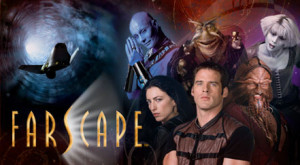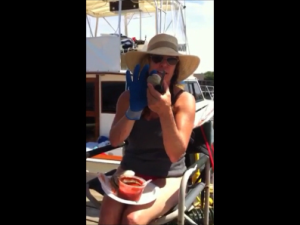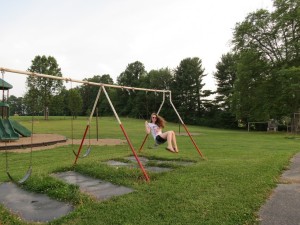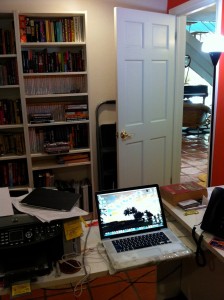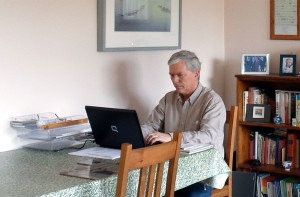Monthly Archives: July 2012
Reader Friday: Questions for TKZ?
Hey guys, it’s Reader Friday, and we want to know what’s on your mind. Do you have any burning writing questions you’d like to ask the TKZ’ers? Post ’em in the comments. We’ll be monitoring the blog today, and will update it with answers. (Of course, you can ask non-writing questions too, but your results may vary!)
Meanwhile, let’s play a game we haven’t played in a while. Grab the closest book to you right now. Not the best selling book, or the most impressive, but the closest one. Now turn to page 67. What is the third sentence on that page? Post it in the Comments, and we’ll try to guess what book it’s from. Or if we can’t, we can make up a title! Whoever posts should come back later in the day and reveal what the title is.
Here’s one to start:
“I will never forget that moment.”
5 TIPS on World Building from Scratch
World building is a huge topic. I will only cover a fraction of it, but it’s a topic that’s been on my mind lately. Writing crime fiction thrillers, I mainly thought of world building as creating a setting that readers can relate to using all their senses. It can also be a world that can be its own obstacle for the characters I turn loose in it.
My brand slogan is “Take a front row seat to suspense,” which is a saying I felt related to the style of my “up close and personal” writing. But writing for the young adult thriller market has broadened my thoughts on world building. It’s stretched me. I’m working on a new YA proposal for a thriller series that will be set in the future, something I never thought I would do. Sci-Fi? Really? I’m faced with creating a world that doesn’t exist and I would imagine fantasy writers do this all the time. It truly amazes me, but now I’m testing myself too. I thrive on a challenge and this new idea has my juices flowing. I wanted to share my thoughts.
When developing a world that exists only in the future or in a paranormal fantasy realm, this is not the time to shy away from “over the top” thinking. The best tool in your author arsenal is actually a question – “What if…?”
Five Tips on World Building
1.) Take the familiar and give it a twist. A reader can more easily imagine the world you are trying to convey if you make them believe they have seen elements of this world before. Take known calamities, myths, or fairy tales and give them a new spin. Or use real hazards in our world and time—project them into the future with dire outcomes—and see how they might turn out. A dark Alice and Wonderland twist (Splintered by Anita Grace Howard, Jan 2013), for example. What if the world has taken a downward spiral from global warming or what if money is no longer a physical commodity? What replaces the power of money?
2.) Add a Heavy Dose of Human Nature. Basic human nature can transcend time and reality. Determine what matters most in the world you are trying to reinvent or create—and apply a human story at the crux of it all. That is good drama and readers will relate to a well told story with good solid conflict. A great example of a near future world is the ASHES trilogy by Ilsa Bick. A teenaged girl, dealing with a fatal brain tumor, must survive a post-apocalyptic nightmare alone.
3.) Take a look back to see ahead. If your world is in the near future, say in 2025, you might take a look back at the same span of years (13 years) to see how much has changed and in what areas. (Compare 1999 to now. What’s changed most?) Or if you are creating a fantasy world, man’s history or mythologies can give you ideas on what to bring into that world. What if there is civil unrest in your world? Who are the players and why? What if a magical mythical creature exists in your world? What would it be and what are its powers?
4.) Paint a world by highlighting the elements that enhance your story most. As an author you might know every aspect of the world you want to portray, but are these details important to your story? It can be tedious to demonstrate your world building skills at the expense of pace. Make your key elements conflict with your protagonist’s goals or become an obstacle to challenge them. Think of your setting and world as a character and place as much importance on setting up a solid framework where your characters can thrive. Your world may have to survive a series.
5.) Color Your World. Every world has its own dialect, slang, food, clothes, and customs. “Borrowing” from fables, myths, and history can be a starting point, but don’t be afraid to develop something on your own. Invent a few words that will play a prominent role in your new world or perhaps take a risk by combining a known world with a fantasy/paranormal one. A reader will feel grounded in the world you are creating, yet feel you are bringing something new to the table. A good example of this is the old Sci-Fi TV show FARSCAPE. A present day astronaut gets caught in a wormhole and transported to another universe where he is the only human. Remember the word, “Frak!” Yep, another four-letter word starting with F.
For the sake of discussion—by the year 2025—what do you think would change most? What would be cool to have? What bad things do you think are looming if we don’t change our ways? Will we still use real money? Are we headed for a global society, rather than individual countries? Exercise your writer brain and throw out anything that comes to mind. In brainstorming a new world, you need to cut loose, think over the top, and have fun.
6 Tips for File Management
This weekend, we helped our daughter move into our condo. She put her furniture in storage and transferred the rest of her belongings to our place. If the condo wasn’t crowded before, it is now. I hope our closet rods don’t fall down under the heavy loads. She filled up every inch of closet space in our three bedrooms. Naturally, she gave us bags of stuff to take home for donation. This is the only benefit of moving as I see it: cleaning out unwanted or outgrown items.
Periodically, we should do the same sweep of our files. Not counting paper files, take a look at your online folders and consider paring them down. Here’s what to do:
- Convert older file formats to current versions. For example, I still have my earlier book files in Word Perfect. Now I exclusively use Word. I need to convert these files before this conversion is no longer possible or the upgrade to the next Microsoft Office edition isn’t compatible. Fortunately, I’d moved over all of my floppy disk files into Dropbox so those were preserved. You could also convert all of your files to PDF if they need to be moved across computers whilst you clear through your files, for example. To edit these PDF documents at a later date, you could always use software such as the one from FilecenterDMS.
- Pick one of your folders, and click on each file to see if you want to keep it or delete it. Here we go. Let’s choose your first published title. Do you really need that notice of your first booksigning? The list of book blurbs that are no longer catchy? Three versions of your synopsis? An email announcement to booksellers that are probably no longer in existence? A copy of the query letter you sent out to reviewers to see if they wanted an ARC? Sure, you might want to keep some of these for sentimental value, but which ones can you use today if you revise and republish this backlist title?
- Update any files that are relevant to your backlist titles available in print or ebook format. Which ones, if any, can you use to promote this book?
- On files that you decide to save, even if you convert to the current version of word processor you are using, make sure your formatting is the same as what you’re doing now. For example, I used to put two spaces between sentences. Now I use only one space. So do a Find and Replace to correct these formatting problems. Get rid of tabs and replace them with 0.5 first line indent. Reformat your headers. Change the font. Make sure the files you are keeping are up to speed. It’ll less hard to access them later that way should you need them again.
- Rename your files if necessary to be more indicative of what they are. I’ve changed a lot of file names as I go through this review process. For Hair Raiser, as an example, chapter one went from chapter1.hair.wpd to chapter 1.doc (or docx, depending on which form of Word I’m saving them in).
- Condense similar files into one file. Let’s say you have three different files, all named something different, with review quotes. Copy the material from two of them into one file and delete the extras. Pruning your files this way will eliminate repetitions.
This cleansing process can be very time consuming but it’ll save you anxiety later when you need to use a particular file, and you don’t have to go hunting for it. Nor will you lose the data when upgrades make conversions of earlier files impossible. So maybe pick one day per week or one particular folder to work on and clean it up. You’ll feel good about your accomplishment.
What advice on file cleansing/updating would you add?
The Great Summer Mystery: How to Open a Clam
by: Kathleen Pickering http://www.kathleenpickering.com
It’s my turn to blog today. Unfortunately, I’m away on vacation this week (and last week) and have been ensconced on a boat along the Fire Island seashore.
Hence, my writing only has been to keep on deadline. Otherwise, I’ve had my feet in the sand, been body surfing and learning one of the great mysteries of the Great South Bay: How to open a clam.
Click here to view the video:
How To Open A Great South Bay Clam
Afterwards, I’ve been sitting back and enjoying glorious summer sunsets like these:
In my writing vocabulary, times away like these are called Percolating—or giving the mind time to rest and let new ideas work their way to the surface.
See? Even when on vacation, the writer is always working. I guess somebody has to do it!
Hope you enjoy the clam shucking video. Feel free to post any questions pertaining to this particular quahog—or how to find this free lunch!
Write on, my friends.
xox, Piks
(Next post will be relevant. I promise!)
Do we Really Want to Know the Alternate Endings?
News that we will finally get to see all of Ernest Hemingway’s 47 alternate endings for A Farewell to Arms in print has me conflicted. At some level I am intrigued, as it would provide a unique insight into all the options Hemingway went through until he was (apparently) satisfied.
On the other hand, though, I don’t really want to see those behind the scenes machinations (it seems a little too much like the Great Oz being exposed). At one level, I like the satisfaction that comes from accepting a story for what is (not for what it could have been).
Although I am sure I would have loved a happier ending to many of my favourite books, it dilutes the power somehow of the ending that was finally chosen, if I know all the other options the author weighed up (especially if some of these options turn out to be really lame!). So all in all, I’m not sure I want to trudge through all of Hemingway’s alternate endings just as I wouldn’t want to know if Emily Bronte considered a sappy ending to Wuthering Heights that involved Heathcliff and Catherine living happily ever after…
Or would I?
One of the most well-known examples of alternate ending controversies is with Charles Dickens’ Great Expectations. Dickens changed his original ending (one in which Pip returns to hear that Estella has remarried) to the one that exists in most editions (they meet in the grounds of Satis House and in the final line “I saw no shadow of another parting from her” there is the implication that Pip and Estella might end up together). The original ending was much more downbeat and apparently Dickens’ friend, Edward Bulwer-Lytton (who read the original draft), urged him to change it to be more positive. Now I probably would not have enjoyed the original, more pessimistic ending so in one sense I am relieved that he changed it – but do I really want to know that this was how Dickens’ originally wanted it to end?
Knowing the alternate endings that famous authors such as Hemingway or Dickens considered provides insight into both the mind of an author as well as the writing process – but I’m still not sure I want to find when I finish a book, a list of all the other possible endings that had been discarded (which is how I assume Scribner is going to present Hemingway’s alternate endings for A Farewell to Arms). It would seem to cloud the enjoyment of the reading experience and make me question the ending that was ultimately decided upon.
But what about you?
- Would you like to know the alternative endings some of your favourite writers considered and ultimately discarded?
- Have you ever wanted to go back and change the ending to your own book, after it was published?
Writing Advice from John Steinbeck
Don’t Stop Believin’
Reader Friday: Where do YOU write?
Last Friday we shared some pix of where the TKZ bloggers write. This week, it’s your turn. A number of readers responded to our request with some great photos of their writing spaces. Here we go!
Basil Sands:
Basil is a self-described “on the go, write-where-you-can” kind of guy.
“I have three primary butt parking spots where my literary juices tend to spike highest,” he says.
I vote for #2, the comfy, cozy chair.
John Gilstrap:
Blogger Emeritus John Gilstrap sent in a view of his office as you come in from the front door. I have to say, John’s writing space comes closest to my ideal vision of a bestselling author’s writing space!
Mike Dennis:
OK, forget the office–just look at Mike Dennis’s place (I think it’s hidden behind the palm trees). It must be great to work in paradise!
“As you can see, British writers don’t tidy up the desk before wandering off to pointlessly take photos, even leaving both dogs in the shot to prove we’re not idly ambling around the lanes instead of working,” he said, with lovable British sarcasm. “No. We’re sitting indoors pretending to concentrate on the next book, while actually taking photos of the ‘workspace’ instead. Work displacement activities are a wonderful thing! Hope you like the way I took one photo, didn’t like it, so took a second while leaving the first on the screen … yeah, I forgot.”
Oh, and the second dog? If you look under the desk, you’ll spot a nose.
Zoe Sharp:
Zoe gets her creative juices flowing in an unlikely spot–her car.
“I get a lot of productive work done in the car on motorway journeys,” she says.
Seriously, Zoe? Be careful doing that in Southern California–they hand out tickets here for texting and using a cell phone, much less tapping out the Next Great American Novel!
Michael Harling:
Michael is shown working in his office.
“This is me, our dining table and, yes, that is my permanent ‘office.’ It is where I work when I am not writing on the bus or a train,” he says.
I’m a dining room table writer too, Michael. Thanks for sharing!
Richard Mabry:
Richard Mabry sent us a photo of his office from his iPhone. Very cool!
“My office used to be in the basement… and my youngest son wanted to move down there so I switched with him,” Mark says. “I rather liked the solar system hanging from the ceiling, so I left it up.”
The acoustic guitar provides an additional outlet for creative expression.
Terri Coop:
Terri describes her office as “very much my cocoon.”
“This is my little corner of the world where I write and run my business,” she says. “It is in a free-standing apartment built inside my warehouse. I rescued the desks and wall mount cabinets from the alley behind an insurance agency (there is another on just like it to the left holding all my graphic design printers). Then I decorated the office around the desks.”
I love the HOPE sign on top of the cabinet. Every writer needs one of these!
Thank you!
Sending out a big thanks to everyone who shared their pictures and stories about their writing spots this week. Hope we didn’t overlook anyone. Please share your story today in the Comments!
Getting Out of the Protection Racket
by Meg Gardiner
Thrillers toss characters into danger. They force cops to chase maniacs through dark woods. They make covert agents disarm suitcase nukes—while trapped by rising floodwaters and clutching a basket of kittens. The writer’s job is to keep the reader worrying: Who’ll survive? Please let it be the cop. And the kittens… won’t somebody think of the kittens?
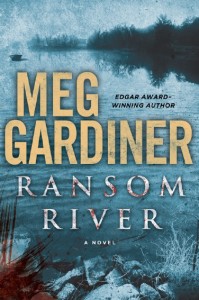
But here’s the thing. If your sympathetic characters always survive—the hero, the partner and girlfriend and Fluffy—are you writing a real thriller? Or are you conducting a puppet show?
This raises the question: Should you ever kill a major character?
Michelle Gagnon has done it. George R.R. Martin does it so regularly that readers preemptively cry, “Noooo!” before opening his books. On the other hand, I recently heard Sue Grafton promise that none of the regulars in her Kinsey Millhone series is going to die. And I felt so relieved. I felt happy and grateful.
And I’m not following in her footsteps. Here’s why.
A few years ago, I realized I was protecting my characters. Not in any obvious way—in my novels they faced plenty of peril. The Evan Delaney series opened with a major character critically injured and disabled. Heck, Jo Beckett’s husband was buried before chapter 1 began. But when I sat down to write, I unconsciously assumed that all the characters I liked would make it out alive.
This was a bad thing.
Bad, but natural. It takes me a year to write a novel, and in that time my characters grow on me. I want them to stick around, and to be happy. That’s my problem: I want them to live normal lives and play softball and build loving marriages and have beautiful babies.
And as soon as I think like that, part of me starts to write them as content, easygoing, settled… and wants to keep it that way.
You can see that what works well in real life would take the edge off in a thriller.
And I saw that I was never truly jeopardizing my characters’ lives or relationships. Sure, I’d write scenes where they faced doom, and readers would worry… but I knew they weren’t at risk. In my own mind, I never truly put their fate up for grabs. I kept them safe. During the course of the novel they got scared and maybe beaten up or even shot, but in the end they always got together for margaritas and a good, if rueful, laugh.

But safe leads to static. Safe kills suspense.
One of my favorite books on craft, Stein on Writing, talks about the concept of the crucible, “the container that holds the characters together as things heat up.” It’s a key to successful plotting:
“Characters caught in a crucible won’t declare a truce and quit. They’re in it till the end. The key to the crucible is that the motivation of the characters to continue opposing each other is greater than their motivation to run away. Or they can’t run away because they are in a prison cell, a lifeboat, an army, or a family.”
It’s a great concept, and an excellent way to increase drama. But by promising my favorite characters a safe landing, I was creating a crucible and then providing them with ejector seats and parachutes.
That’s when I reset my mental parameters to imagine: What if anybody can die? What if any and all relationships—family, friends, lovers—can be ripped apart by events and choices? And once I put it all on the table, I saw a more powerful way to write fiction. I opened myself to creating stories that went to the end of the line.
So I got out of the protection racket.
Now I try to write without a net for my characters. My new novel Ransom River throws heroine Rory Mackenzie from the frying pan into the fire. She’s a juror on a murder trial who finds herself fighting for her life when gunmen attack the courthouse. Though she escapes, she lands in a hotter crucible—she discovers that the attack is connected to an old unsolved case, and to dark skeletons in her own family history. Bringing the truth to light might destroy her and the people she loves.
I think I took the story as far as it could go. And part of me still thinks, Yikes, Rory. You’ve got some nasty relatives. Sorry, kid. But I know I shouldn’t change a word.
Here’s my writing advice: Put your characters to the test, and don’t let them get out of it by any means but their own grit and blood and pain.
Don’t let coincidence save them. Don’t let somebody else come to their rescue. Don’t provide a secret fire exit to the sunny side of the street.
Make them act. Make it hard. Force them to sacrifice. If they’re characters that readers care about, you’ll create genuine suspense. You’ll raise the stakes, and write books that readers shove into their friends’ hands, saying, You’ve got to read this.
MegGardiner.com | Visit Meg on Facebook and Twitter | @MegGardiner1


